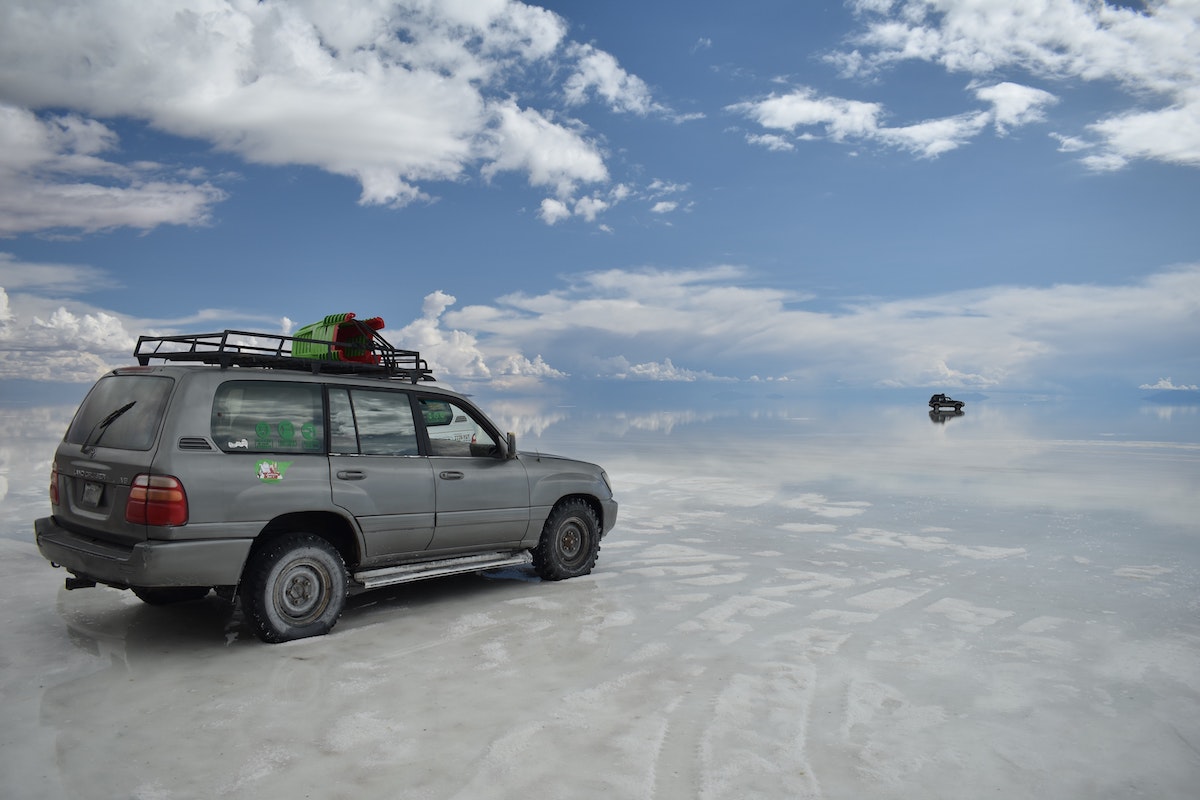By: Sarah Stone
Skip to...
The natural wonders of the earth are vast, and the history behind these wonders can be as magnificent as the sites themselves. The breathtaking salt flats of Salar de Uyuni, Bolivia, are just one example. Spanning over 4,000 square miles, this remote destination brings thousands of tourists each year to witness its spectacular natural beauty.
A Unique Natural Phenomenon
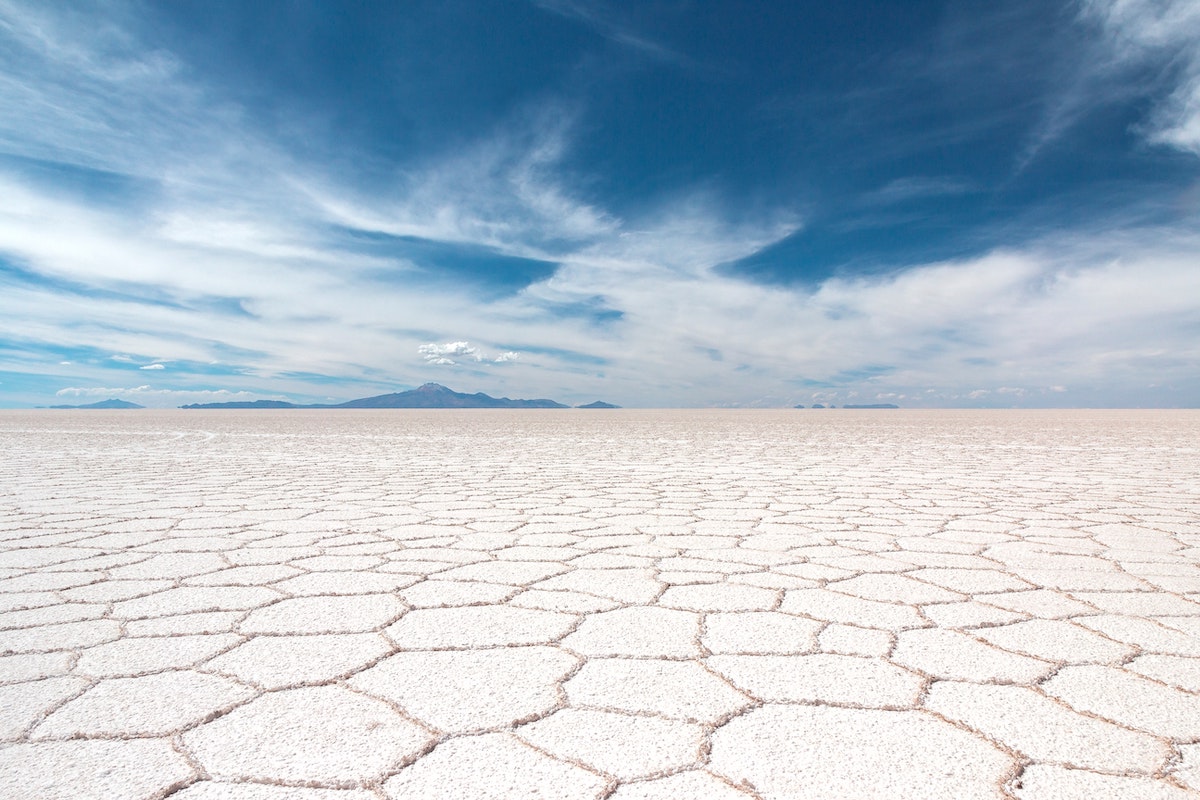
Photo by Samuel Scrimshaw on Unsplash
Salar de Uyuni is located in southwestern Bolivia. The salt flats originated partly due to a lack of drainage outlets. As water from the surrounding mountains cascaded down, it formed a gigantic lake. Heat from the sun caused the high salinity to create a crust of salt across the water, and after millions of years, an estimated 10 billion tons of salt now remains.
The Mysterious Mirror
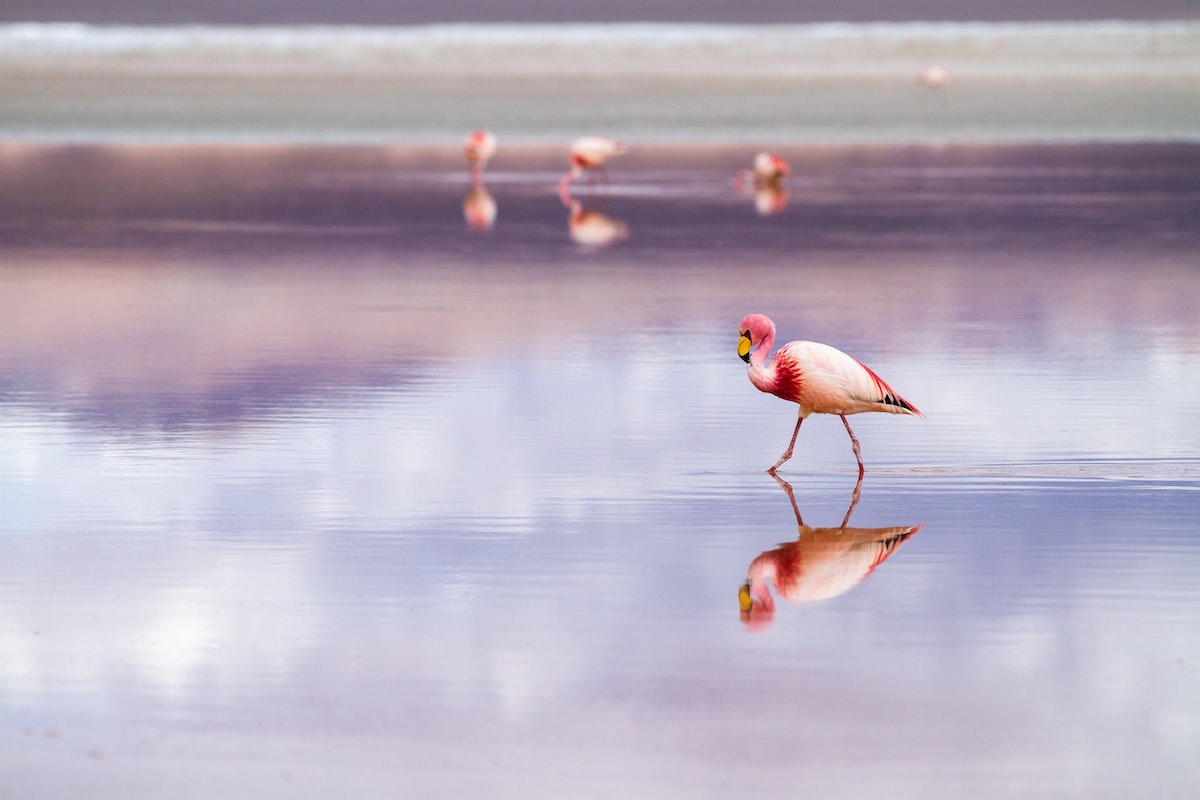
Photo by Elizabeth Gottwald on Unsplash
Today, the water running from the mountains can leave coat the salt flats up to 20 inches, leaving a gorgeous mirror effect. If you would like to see this phenomenon for yourself, the best time to visit is during the rainy season from December through April. Be sure to plan accordingly, though—if the water is too deep, you won’t be able to drive onto the salt flats, and your tour of Salar de Uyuni may even be delayed!
Creative Construction and Amazing Accommodations
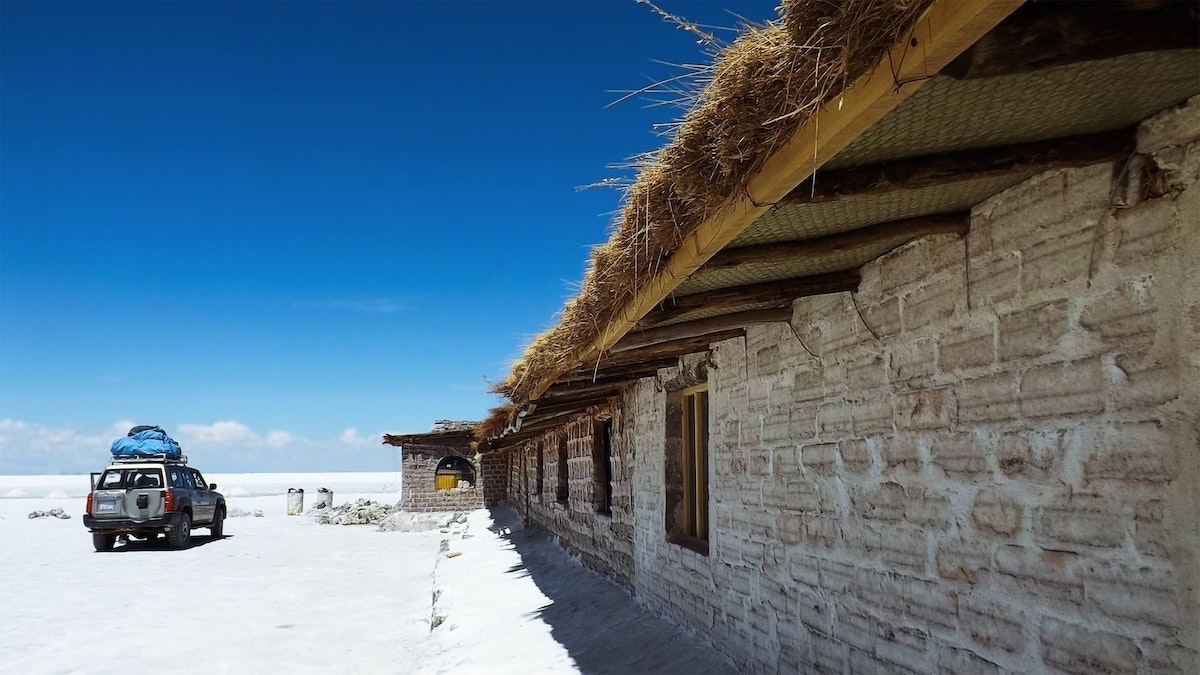
Photo by WILLIAN REIS on Unsplash
Because of the long trek from surrounding towns, traditional building materials in this region are limited—instead, you’ll find that the locals have used cemented salt as a substitute, even creating tables, beds, and flushing toilets out of salt bricks. And while the exterior of most hotels here are plain, the interiors have all of the amenities that you could hope for.
You can find several 4-star hotels set along the perimeter of Salar de Uyuni, giving you an incredible view of the salt flats. Colcha K, Colchani, and Uyuni all are small towns that thrive on putting up guests, preparing delicious meals, and providing access to the sights of the area. Prices in these towns range from $50 to $150 per night, depending on the location and amenities. Many hotels you’ll find include cable TV, air conditioning, restaurants, parking, and laundry facilities. Higher-end accommodations offer meeting rooms, spas, pools, airport shuttles, and tour and ticket assistance.
Fantastic Cuisine

Photo by Edgar Castrejon on Unsplash
Bolivian cuisine is Spanish-inspired with a dash of German, Italian and French. Try pizza with spicy llama and pesto if you’d like to get creative! There are also more traditional dishes like steaks, salads, and quinoa-based stews. Many restaurants around Salar de Uyuni offer a complimentary breakfast of local fruits and breads.
Transportation around Salar de Uyuni
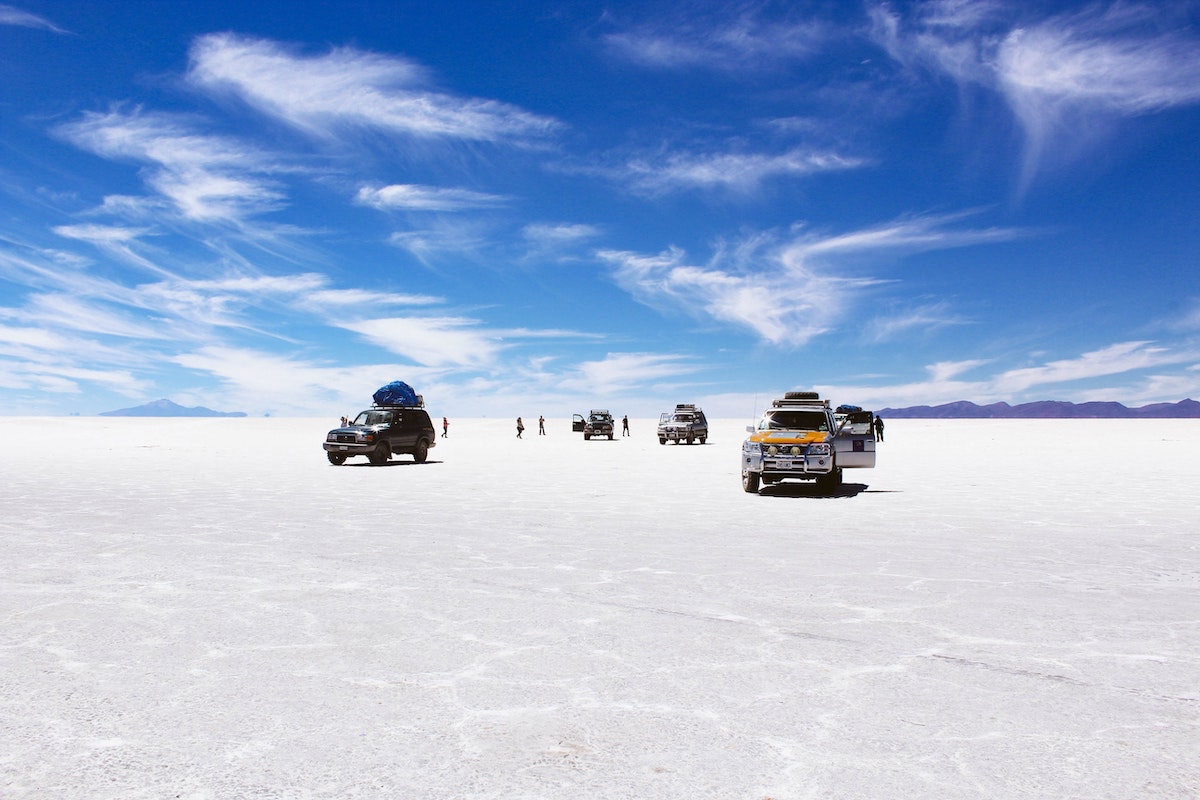
Photo by Loïc Mermilliod on Unsplash
There are buses available that travel from La Paz and Uyuni—for this 8-hour trip, most travelers choose to book a room in Uyuni the day before so that they are refreshed for the next day’s tour. Trips generally cost $10 to $20 depending on the level of comfort you want, and there are other buses with roomier seats, air conditioning and heating, and food for a little extra. There also are train services, which can be an exciting way to see the landscape.
Preparing for Your Trip

Photo by Jeison Higuita on Unsplash
You may think of the desert as oppressively hot, but temperatures can drop during the nighttime as low as -4° F, so packing warm clothes is a must. The altitude of Salar de Uyuni is very high at 16,000 feet above sea level (three times’ higher than Denver). It’s recommended that you spend a few days in La Paz to acclimate—be sure to bring some fresh cocoa leaf to fight high-altitude sickness, and pack lots of sunscreen and protective gear!
When going on a tour, have a look at the different travel agencies in the area, and think about what you want from your visit. A few questions to ask:
- Does the guide speak your language?
- What will be provided on the tour (e.g., snacks and water), and what should you bring?
- How many people are on the tour, and if you’re a solo traveler, can you join a group?
- How long is the tour, and what can you expect from the experience? Will it be educational, how long will you stay at the salt flats, and so on?
- How much experience does the company have, and are there reviews that you can find?
About the Author
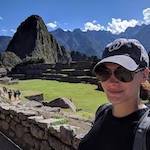 As the editor-in-chief of Frayed Passport, my goal is to help you build a lifestyle that lets you travel the world whenever you want and however long you want, and not worry about where your next paycheck will come from. I've been to 20+ countries and five continents, lived for years as a full-time digital nomad, and have worked completely remotely since 2015. If you would like to share your story with our community, or partner with Frayed Passport, get in touch with me at sarah@frayedpassport.com!
As the editor-in-chief of Frayed Passport, my goal is to help you build a lifestyle that lets you travel the world whenever you want and however long you want, and not worry about where your next paycheck will come from. I've been to 20+ countries and five continents, lived for years as a full-time digital nomad, and have worked completely remotely since 2015. If you would like to share your story with our community, or partner with Frayed Passport, get in touch with me at sarah@frayedpassport.com!
Featured image via Unsplash.

